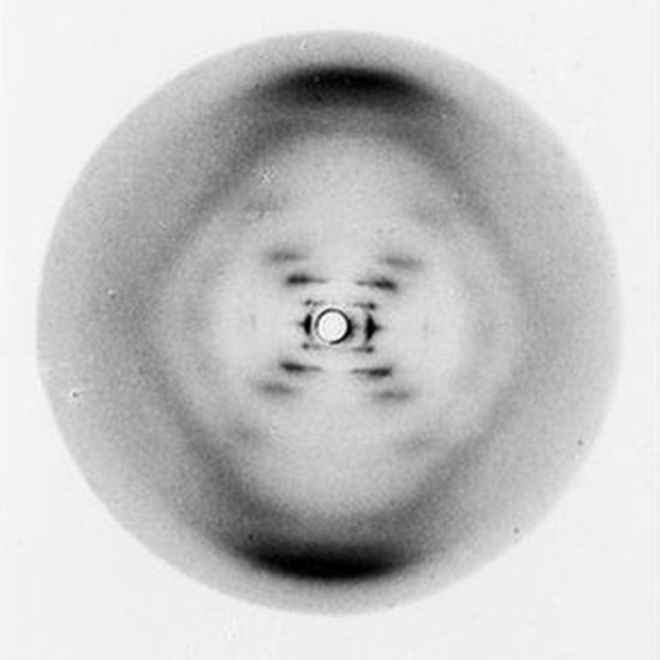
If you, like most others, are under the impression that Watson and Crick discovered DNA, you have plenty of company, but you all happen to be wrong.
Watson and Crick's 1953 paper, where they solved the structure of DNA, earned them fame and fortune - more than most Nobel Prize winners. While knowing the structure of such an important biomolecule was an historic accomplishment, they were able to solve it only because of the impressive body of work that preceded them. That said, this discovery is no different than any other breakthrough in science.
The discovery of DNA took place over the course of 100 years, during which time at least a dozen different scientists played key roles. Here are some of the discoveries that enabled Watson and Crick to solve the DNA structure many years later.
The early work on traits and inheritance
The work of Gregor Mendel in the mid 1800s gave us the earliest understanding of the inheritance of traits. Mendel observed that crossing pea plants resulted in different ratios of traits in the offspring. His laws of segregation began to form the first notion of genetics, although genes and DNA were far from bring realized. At around the same time as Mendel, Charles Darwin was studying finches in the Galápagos. Darwin realized that traits can change (we now know this to be due to mutation) which served as the basis for his theory of natural selection.
The Discovery of DNA - 1869
A Swiss physician and scientist, Dr. Friedrich Miescher first discovered the presence of DNA in human white blood cells.
Defining the composition of DNA - 1919
Another major advance was achieved by Dr. Phoebus Levene, who worked at the Rockefeller Institute of Medical Research in New York City. Levene discovered the three major components (sugar, phosphate, nitrogenous base) of a nucleotide - the smallest unit that comprises a DNA molecule.
Chromosomes are responsible for the inheritance of traits
Thomas Hunt Morgan advanced Mendel's work on inheritance of traits, and bridged it together with the new knowledge about chromosomes, in doing so defining what is known as the "chromosomal theory of inheritance"— that chromosomes were responsible for Mendel's inheritance patters. Morgan's contributions to the field of genetics, which were performed in the fruit fly Drosophila melanogaster, cannot be overstated.
DNA is defined as genetic material
This landmark discovery was made through three of the most elegant and important experiments of the 20th century, done by Frederick Griffith in 1928, the team of Avery, MacLeod and McCarty in 1944 and the team of Alfred Hershey and Martha Chase in 1952. Before this work, it was unclear if the biomolecule responsible for the inheritance of traits was protein, fats, or any other component in the cell. However, these scientists performed the impeccably designed experiments to show, for the first time, that DNA is the genetic material.
Diving into the details of the structure
Edwin Chargaff, a chemist who spent most of his career at Columbia University, was so inspired by the work of Avery, he switched fields mid-career in order to study DNA. He stated in 1971,
- "Avery gave us the first text of a new language, or rather he showed us where to look for it. I resolved to search for this text."
Edwin Chargaff went on to determine the ratio of the four nucleotides found in DNA - a key piece of the puzzle that would lead to an understanding of the structure.
*DNA is a helix (X-ray diffraction)
Following Chargaff's rules, as well as advances that had been made in model building, Watson and Crick were part of a group of scientists who were all trying to become the first to put the pieces in place to solve the structure of DNA. In fact, Linus Pauling proposed a model (a triple helix model) for the structure at about the same time as Watson and Crick.
But, Pauling himself did not have access to what Watson and Crick did - the lab notebooks of Rosalind Franklin which held the best X ray diffraction data on DNA in the world. James Watson was given access to her best photographs - without her knowledge - including the now famous photograph 51 (seen below) - the piece of data that led Watson and Crick to solve the structure of DNA. Although it may not look that impressive to the untrained eye, Watson recalled, upon seeing it for the first time, "The instant I saw the picture my jaw fell open and my pulse began to race."
How did he see anything meaningful in her photograph? When X-rays are sent through the DNA molecule, they bump into the molecules, and then "bounce off" (diffract) which causes them to make a unique pattern on a piece of film. The "X" present in the middle of the film is the classic mark of a double helical structure. Each horizontal black line corresponds to a turn of the helix with the distance between the bars measuring the height of one turn. Additionally, the position of the white spaces indicated that the bases were present on the inside of the helix - not the outside, both of which were popular theories during that time.

Discovering the structure of the double helix was only one piece of a very large puzzle. But, Watson and Crick seem to get credit for doing the whole puzzle. When we look at the story a little more closely, we realize that Rosalind Franklin knew where the puzzle piece went before they did - but Watson and Crick grabbed the piece out of her hands, and finished the puzzle without her. Although that may be the nature of science, no one makes a scientific discovery on their own and the people who built the scaffold upon which the big discovery rests should not be forgotten.



